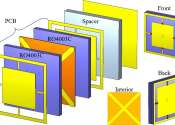A new roving biologger that travels along a sperm whale's body surface
A team of researchers at Yamagata University and Teikyo University of Science, in Japan, have recently developed a new roving biologger, or whale rover, which can travel along a sperm whale's body surface and collect valuable ...









